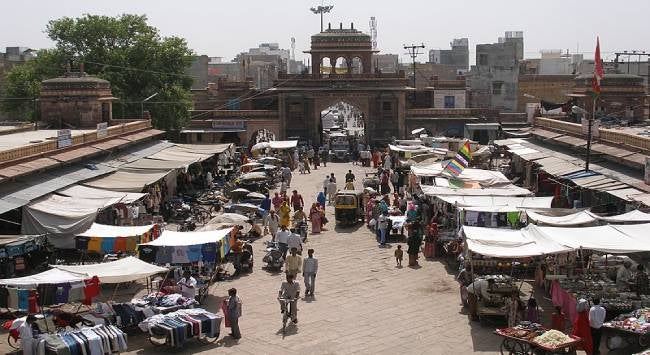Summary
India’s lower rate of gross domestic product (GDP) growth does not yet signal an economic downturn. However, the early warning signals are there. The next two quarters will reveal if consumption expenditure reduces progressively to usher in a broad-based deceleration in GDP growth.
India’s recently published gross domestic product (GDP) growth estimates for the second quarter of FY2022-23 (July-September 2022) show a lower growth rate of 6.3 per cent, compared with 8.4 per cent in the corresponding period in FY2021-22. The growth rate is also less than half of the 13.5 per cent growth recorded in the first quarter of FY2022-23.
While the above growth rates are all in constant prices, adjusted for inflation, the GDP growth rate in current prices is 16.2 per cent in the second quarter of FY2022-23, compared with 19 per cent in the same period in FY2021-22. The much higher growth rate in current prices indicates the inflated level of prices in the economy and their impact on enhancing the monetary value of goods and services.
Despite the reduction in the second quarter of FY202-23, the half-yearly (April-September 2022) growth rate is at 9.7 per cent, largely due to buoyant growth in the first quarter of FY2022-23. However, even this half-yearly growth is lower than the 13.7 per cent growth recorded in the first half of FY2021-22.
Various global rating agencies have begun revising downward India’s GDP growth forecasts for FY2022-23 and FY2023-24. Does the lower GDP growth in the second quarter of FY2022-23 signal the beginning of an economic downturn?
It is still early to confirm a deceleration in GDP growth. However, the early warning signs must be heeded.
The supply side of the economy is displaying mixed signs. Agriculture and services continue to show steady growth rates in the second quarter of FY2022-23. Agriculture has grown at par in the first and second quarters of FY2022-23. The services sectors – trade, hotels, transport, communication, financial, real estate and professional, public administration and defence – continue to maintain stable growth rates in the second quarter of FY2022-23. All of them, though, along with construction, show comparatively slower paces of growth in the last quarter.
Supply-side concerns arise over the growth rates in mining and electricity and manufacturing. Both are contracting. If the trends continue into the remaining quarters of the year, the contractionary impact on overall growth will strengthen.
On the demand side, there are lesser concerns. The external sector appears to be doing rather well, with exports and imports displaying growth rates in the second quarter of FY2022-23 that are higher than those in the first quarter of FY2022-23 and the second quarter of FY2021-22. Domestic demand, as reflected through the private final consumption expenditure, while growing at a lower rate in the second quarter of FY2022-23 than in the first quarter, is still at a higher rate than in the second quarter of FY2021-22. Domestic investments, as seen from the gross fixed capital formation, are growing at a stable rate.
Given the absence of strong warning signals from the demand side, a broad-based economic downturn is yet to manifest. The next couple of quarters of FY2022-23 should be able to throw more insights into whether a downturn has begun setting in.
The key indicator to watch out for is domestic consumption. With consumption being India’s main driver of economic demand, a deceleration in consumption is a cause for concern. While consumption has grown at a lower rate in the second quarter of FY2022-23 than in the first quarter, the next two quarters will reveal whether it has begun slowing decisively. If growth rates of consumption in these quarters exhibit progressive reduction, then it is certainly a cause for concern.
What might lead to a progressive decline in consumption? Businesses, particularly manufacturers, are already struggling to cope with high energy and material costs. As they pass on these costs to consumers by charging more for their products, the latter, also trying hard to accommodate higher living costs, particularly food, will reduce buying manufactured items, especially white goods. This would lower demand for manufacturing goods, leading to lesser utilisation of installed capacity.
Over time, the impact will become broad-based as high prices force consumers to cut expenses across services like entertainment, tourism and real estate. Jobs will be cut in these services as a result. This is when the downturn will start setting in across both the supply and demand sides of the economy, leading to a contraction in economic growth.
India is not there yet. However, consumption might begin slowing as the sheen of the festive season gradually weans off. The post-COVID-19 revival has rapidly increased pent-up demand and consumption expenditure. The effects can hardly be expected to last forever. Unless the natural economic momentum revives through growth in jobs and incomes and price reduction, the deceleration in economic growth will be hard to arrest.
. . . . .
Dr Amitendu Palit is a Senior Research Fellow and Research Lead (Trade and Economics) at the Institute of South Asian Studies (ISAS), an autonomous research institute in the National University of Singapore (NUS). He can be contacted at isasap@nus.edu.sg. The author bears full responsibility for the facts cited and opinions expressed in this paper.
The image credit is https://commons.wikimedia.org/wiki/File:Jodhpur,_India,_Market.jpg
-
 More From :
More From :
-
 Tags :
Tags :
-
 Download PDF
Download PDF



